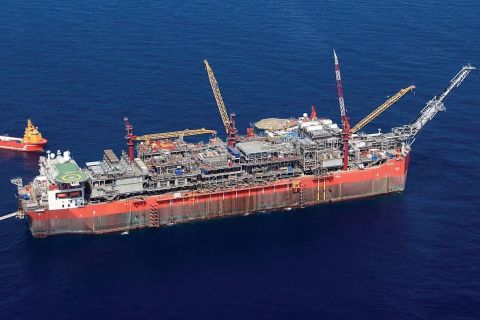Given the global oil industry’s massive capital expenditures, shortening the time to first oil is a powerful management objective. In early 2007, a well-known oil and gas organization stated, for example, that the industry’s production project costs have jumped more than 50% in just the last 2 years. In that environment, options for minimizing costs become not only appealing but necessary.
Of the primary drivers in this ever-increasing costs outlook, project management is cited as one of the key ways to limit costs for any project. That conclusion is hardly surprising since exploration and production (E&P) projects continue to experience a high cost overrun rate, whether in the capital costs arena or when instituting change within oil and gas companies on a daily operational or information technology (IT) basis. Let’s revisit how the picture can be enhanced using current oil and gas project management practices. Otherwise, “You will get what you deserve, not what you want.”
Project management, not a mystery
Corporate change revolves around top management at oil companies defining what will happen and recognizing that change is not mystical but a project to be managed. In the ever-changing oil and gas business, one discovery can change the entire direction of an oil and gas company. Therefore, leadership must first determine “what” is to happen and “how” change will be effectively accomplished then manage the transformation using fundamental business rules for project management. Project management is not simply part of change within an oil company; it must lead and be responsible for it.
Success requires an obvious integration of all company components, through project planning and corporate governance. Sometimes considered cumbersome, governance actually is quite pragmatic and scalable, including exploration and development activities. It provides a clear definition of who does what, when and how, which is especially helpful for unstructured oil and gas companies needing rules and processes for effective use of limited resources.
Most important in the entire project is holding only one individual accountable for the change management. Otherwise, the project will not have direction and senior management support, confusion reigns, and the project is burdened with unnecessary distractions. Again, think project management first.
Hard choices
Oil company management often says change is an issue that “other” oil and gas companies need to address. Yet the same managers typically ignore this basic project rule because resolution requires hard choices. Top-down leadership is obligatory for effective project management, and its execution at the outset ensures that good change management will follow and is part of the desired outcome.
Essentially, making change successfully occur is not magic but more like a defined process grounded in logic management and with leadership showing employees not just “what” needs to be done but “how” and demonstrating “why.” However, in explaining the change process, it must be made absolutely clear that “what” is already established by upper management. Project managers now must make “how” happen as a project.
Getting into balance
Negotiating this obstacle course means that certain actions must be accomplished to get everything into proper balance. First, whether for onshore or offshore, define what’s needed to succeed in terms of people, plans and resources. Answer the question, “What do we want to be when we come out on the other side?” Then, leadership must determine how to staff the change project.
Optionally, project management leadership can bring in consultants, and they may commandeer the project, or consultants may provide supplemental staff support to free up managers that basically do the work themselves. In any event, consultants may need to be involved since they may have more experience to assist in project management.
Second, oil companies must analyze what they are doing to ensure that they best understand what will be the basis for the future, including required E&P resources and how to procure them in a timely manner.
Third, leaders must prioritize current work/process and do only the minimum to maintain current operations. Similarly, focus only on absolute need in order to prevent too many ongoing internal (crisis du jour) projects from obscuring the overall project focus.
All (or at least most) effort must be prioritized against the master project schedule, defining which resources should be or are now available. When all non-productive work is eliminated
or reduced, relevant resources become more obvious. Then do a material balance between “needed vs. available” and cover any shortfall with outside experienced resources.
Ultimately, oil industry projects and change are not only doable, but scalable and affordable. However, it requires real authentic leadership and people’s commitment to change the oil company. Change only happens through real leadership and proven project management, not a merely a “change management program.” Think about the potentially huge impact on reducing an oil company’s capital and human costs.
Bob Troy, btroy@caltexenergy.us, is president and chief operating officer of Caltex Energy in Houston.
Recommended Reading
TotalEnergies Starts Production at Akpo West Offshore Nigeria
2024-02-07 - Subsea tieback expected to add 14,000 bbl/d of condensate by mid-year, and up to 4 MMcm/d of gas by 2028.
Well Logging Could Get a Makeover
2024-02-27 - Aramco’s KASHF robot, expected to deploy in 2025, will be able to operate in both vertical and horizontal segments of wellbores.
Shell Brings Deepwater Rydberg Subsea Tieback Onstream
2024-02-23 - The two-well Gulf of Mexico development will send 16,000 boe/d at peak rates to the Appomattox production semisubmersible.
E&P Highlights: Feb. 26, 2024
2024-02-26 - Here’s a roundup of the latest E&P headlines, including interest in some projects changing hands and new contract awards.
Remotely Controlled Well Completion Carried Out at SNEPCo’s Bonga Field
2024-02-27 - Optime Subsea, which supplied the operation’s remotely operated controls system, says its technology reduces equipment from transportation lists and reduces operation time.





